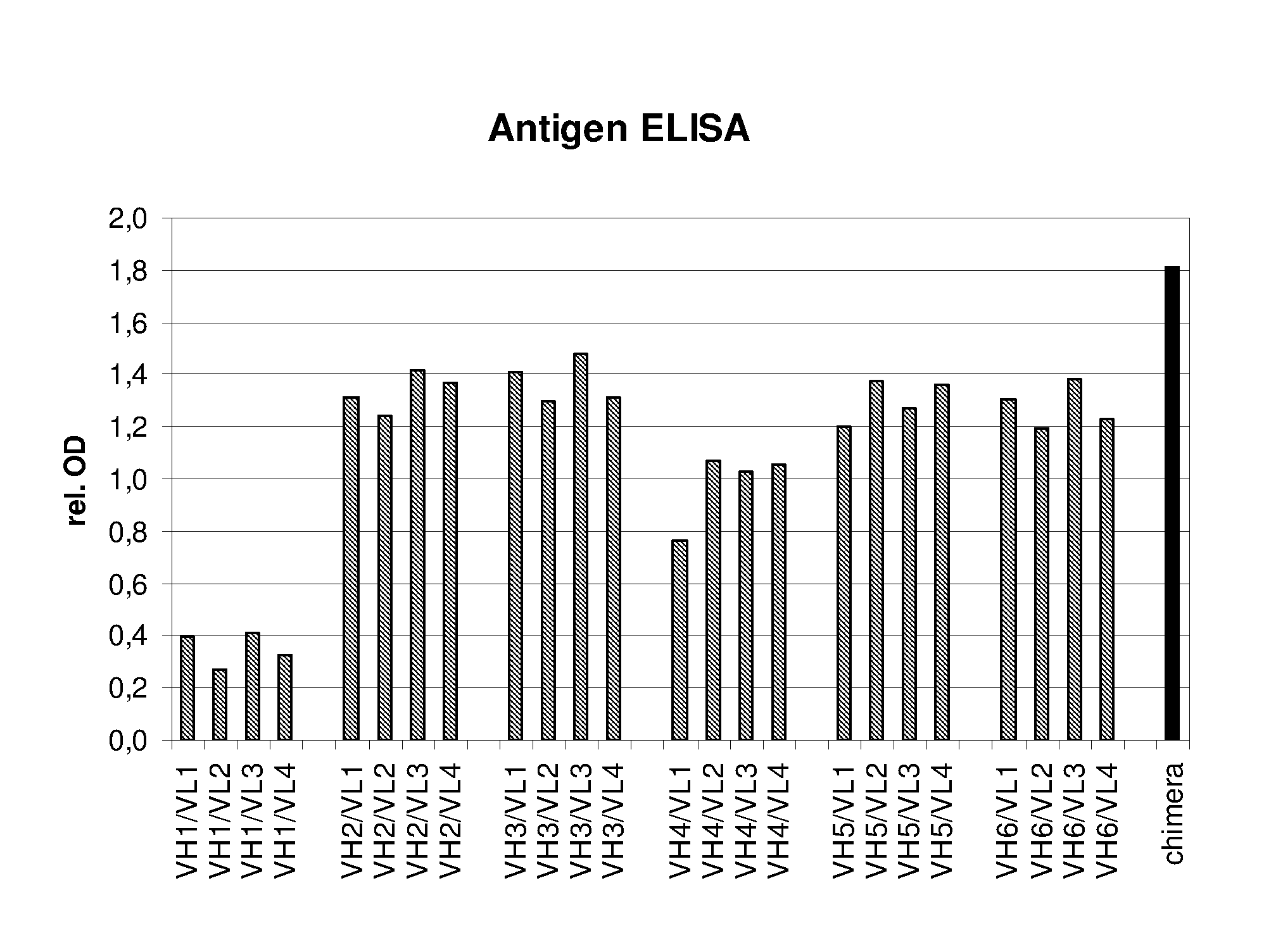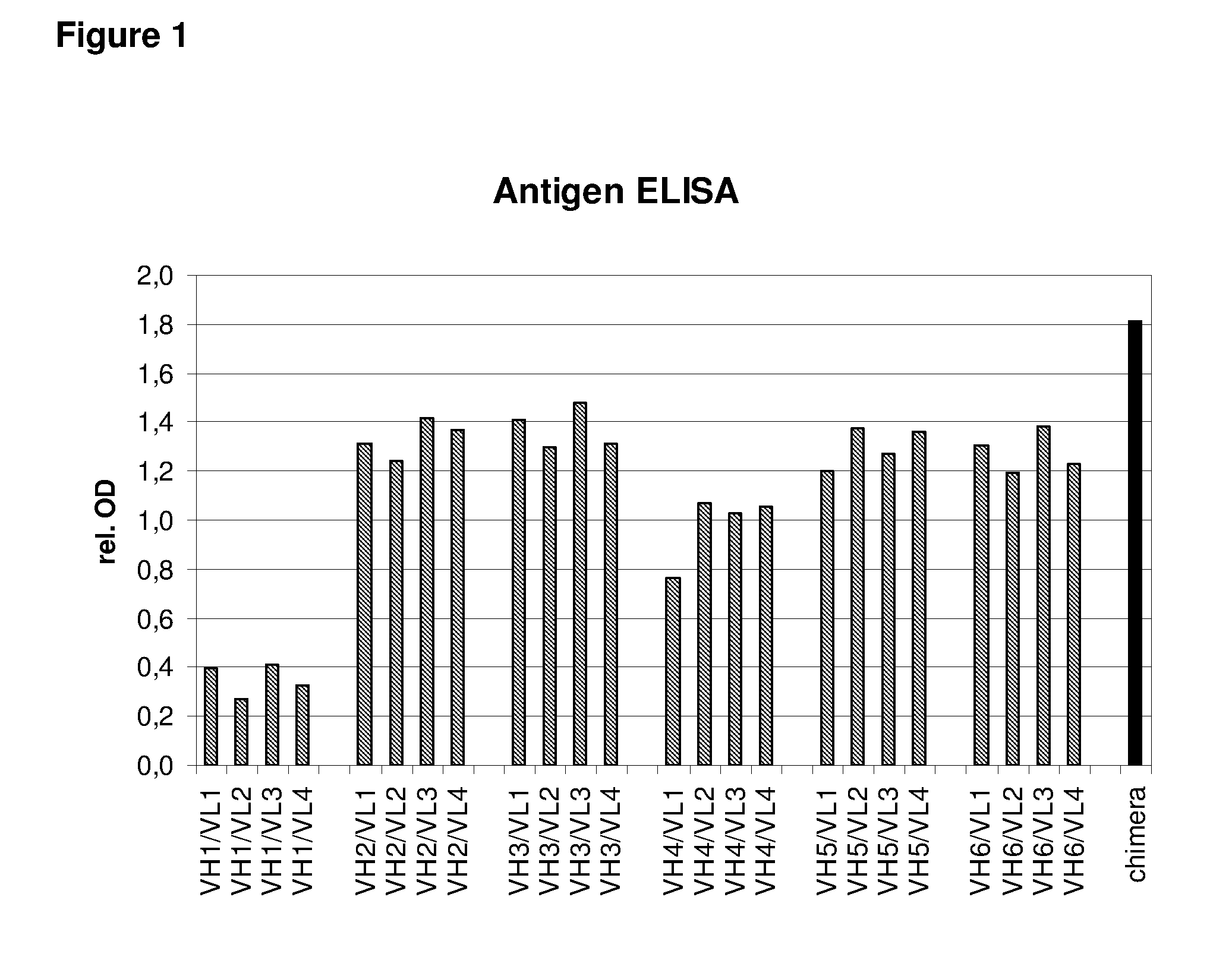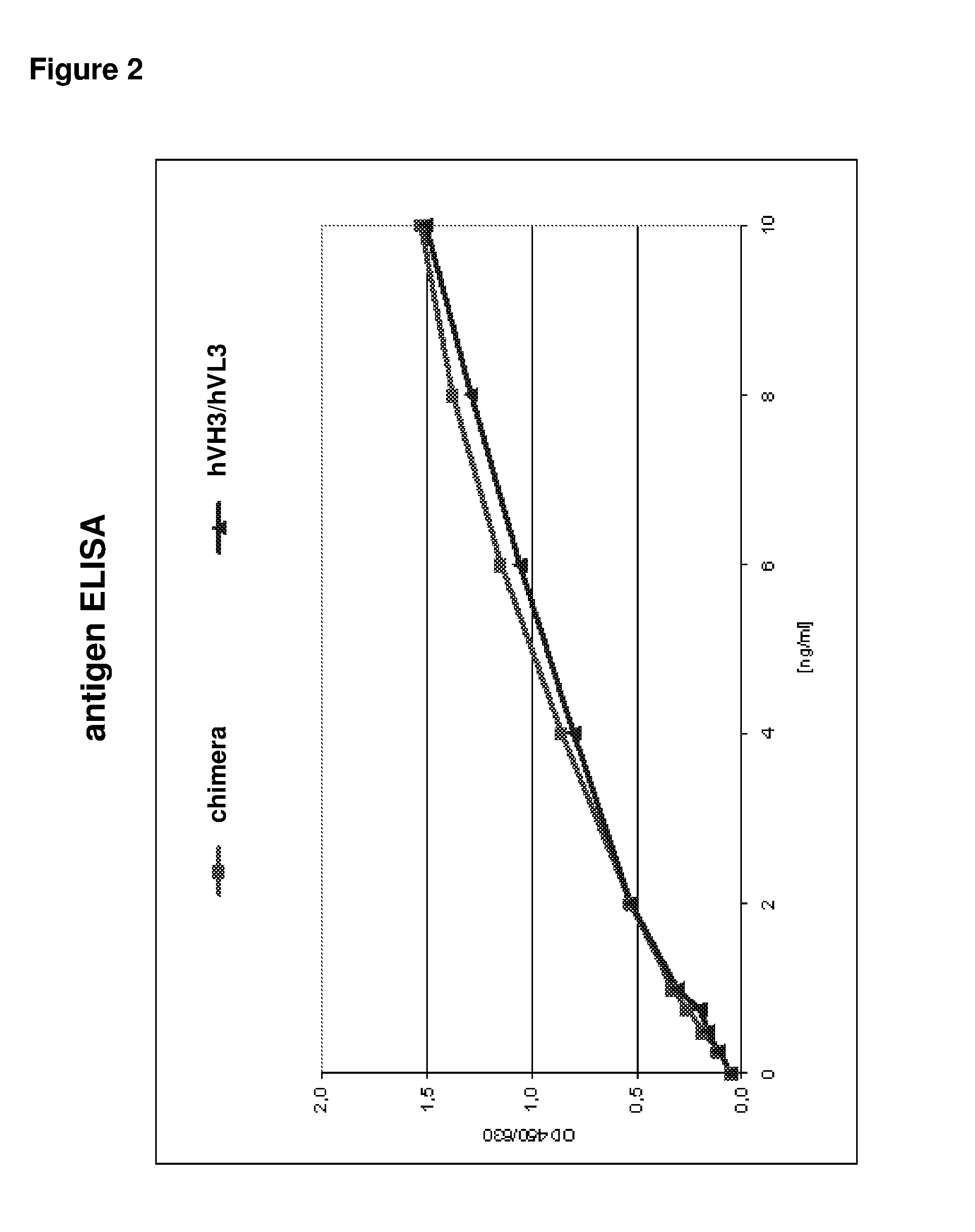Humanized EGFR antibodies
a humanized, antiegfr technology, applied in the field of antibodies, can solve the problems of reducing the affinity and specificity of engineered antibodies, causing systemic inflammatory effects, and the possibility of human anti-mouse antibody (hama) response, etc., to achieve high sialylation degree, improve antigen binding, and improve the effect of circulation half-li
- Summary
- Abstract
- Description
- Claims
- Application Information
AI Technical Summary
Benefits of technology
Problems solved by technology
Method used
Image
Examples
example 1
Humanization of the Murine Heavy and Light Chain Variable Regions of an Anti-EGFR Antibody
[0111]The nucleic acid sequences coding for the heavy and light chain variable regions (VH, SEQ ID NO: 4, and VL, SEQ ID NO: 8) of a monoclonal antibody directed against an epitope in the extracellular ligand binding domain of human EGFR1 were ligated to the genomic sequences of the human constant γ1 region (CH) and the human constant κ region (CL), respectively.
[0112]On the basis of these chimeric clones, humanized antibodies were constructed. To this end, point mutations were introduced into the nucleic acid sequences of the murine framework regions of VH and VL in order to generate the corresponding human framework regions. The target human framework regions were selected from a human germ line antibody library. In particular, the most related framework regions were chosen from the library depending on their overall sequence similarity and their CDR loop classification. All data obtained wer...
example 2
Binding of the Humanized Antibody Variants to Immobilized EGFR
[0115]Following expression of the different constructs in COS cells, the titer of the humanized antibody variants was determined and their concentration adjusted. Then, the humanized antibodies were screened in an antigen ELISA. Exemplary results of one screening round are shown in FIG. 1. All variants showed a significant binding to the antigen. Good antigen binding was observed for humanized antibody variants comprising a heavy chain variable region selected from VH2, VH3, VH5 and VH6. In particular the variant VH3 / VL3 showed good results. Furthermore, also antibodies comprising the heavy chain variable region VH7 or VH8 showed good antigen binding. A direct comparison in antigen ELISA of the chimeric antibody and the humanized antibody variant hVH3 / hVL3 is shown in FIG. 2.
example 3
Binding of the Humanized Antibody Variants to Different Cells Expressing EGFR
[0116]Using IgG antibodies comprising these humanized heavy and light chain variable regions in different combinations, FACS assays with HT-29 cells, LS 174.T cells or DU145 cells were performed. The binding of selected antibody variants are shown in FIGS. 3 to 7. It was demonstrated that the humanized antibodies, in particular the humanized antibody variant VH3 / VL3, have antigen binding properties comparable to those of the chimeric antibody from which they are derived. Furthermore, also VH7 and VH8 antibody variants showed good binding to these cells.
PUM
| Property | Measurement | Unit |
|---|---|---|
| concentration | aaaaa | aaaaa |
| concentration | aaaaa | aaaaa |
| pH | aaaaa | aaaaa |
Abstract
Description
Claims
Application Information
 Login to View More
Login to View More - R&D
- Intellectual Property
- Life Sciences
- Materials
- Tech Scout
- Unparalleled Data Quality
- Higher Quality Content
- 60% Fewer Hallucinations
Browse by: Latest US Patents, China's latest patents, Technical Efficacy Thesaurus, Application Domain, Technology Topic, Popular Technical Reports.
© 2025 PatSnap. All rights reserved.Legal|Privacy policy|Modern Slavery Act Transparency Statement|Sitemap|About US| Contact US: help@patsnap.com



